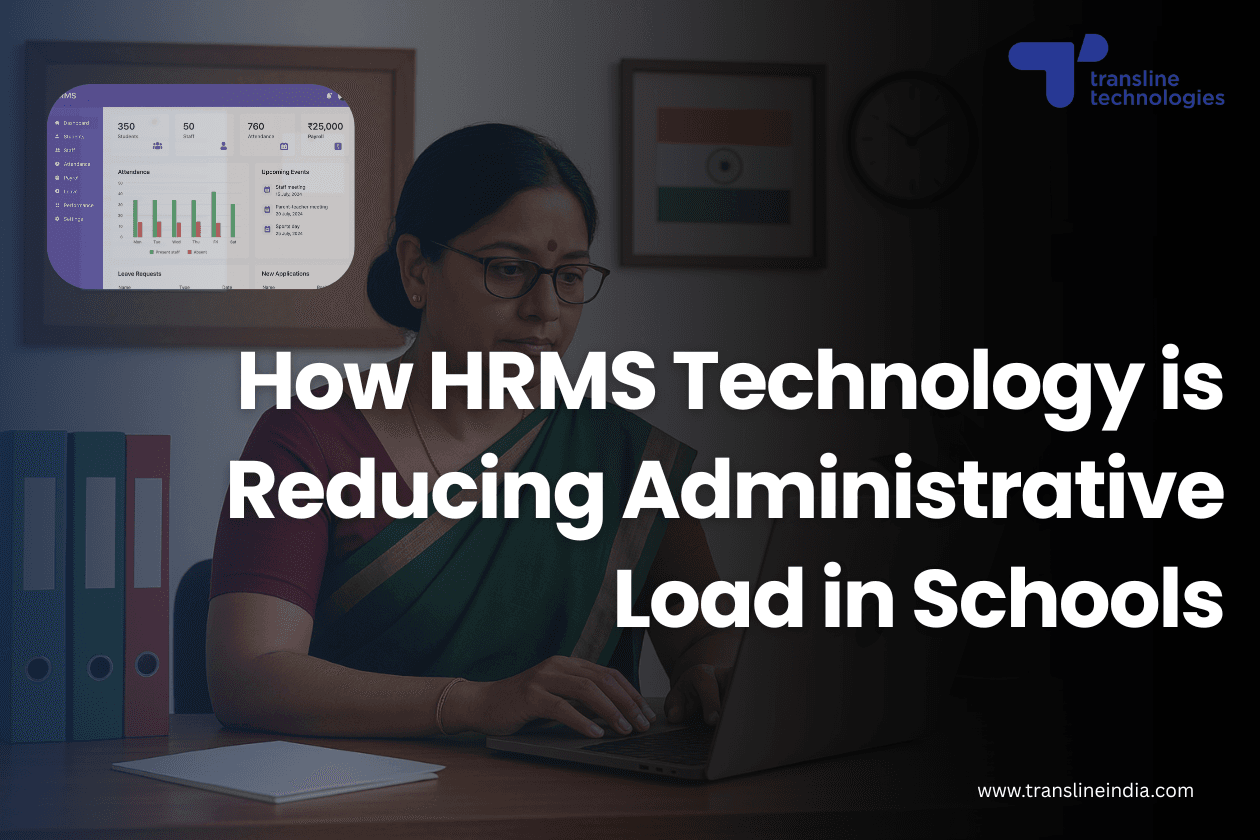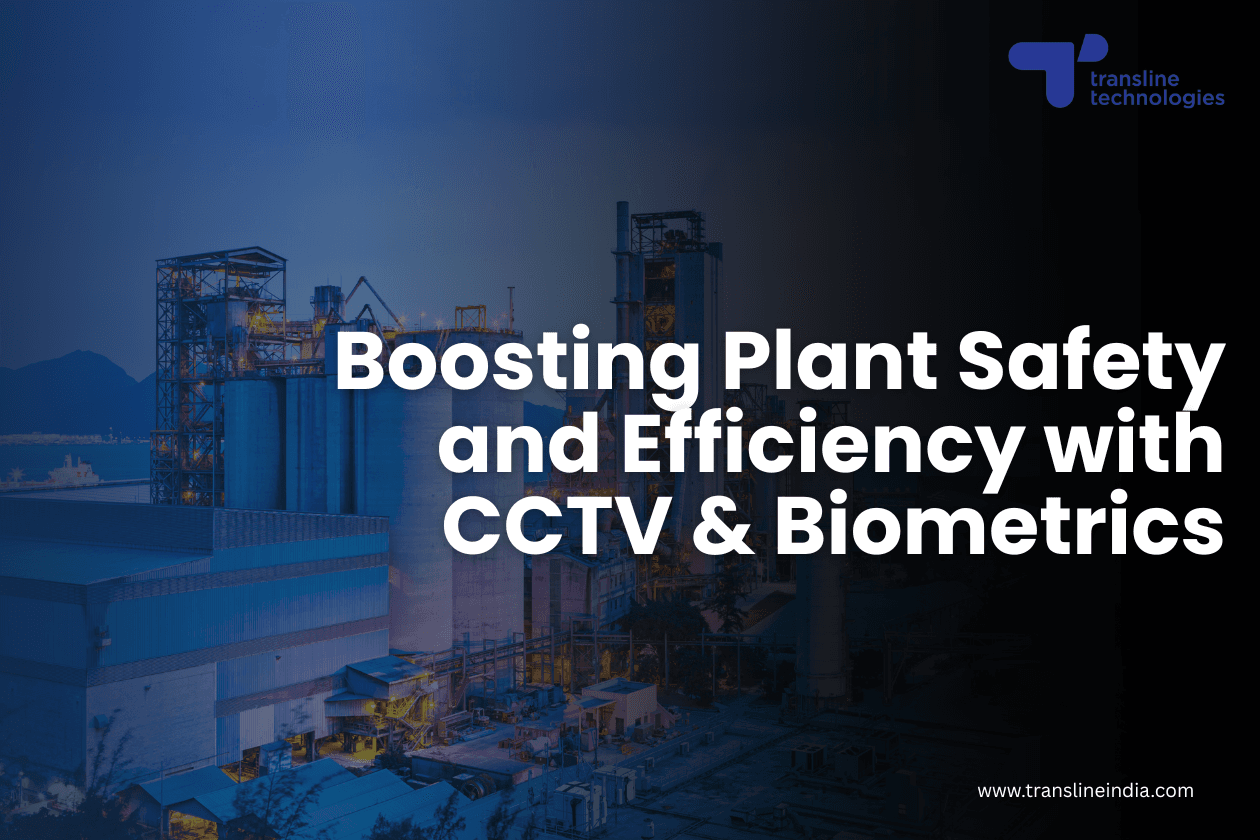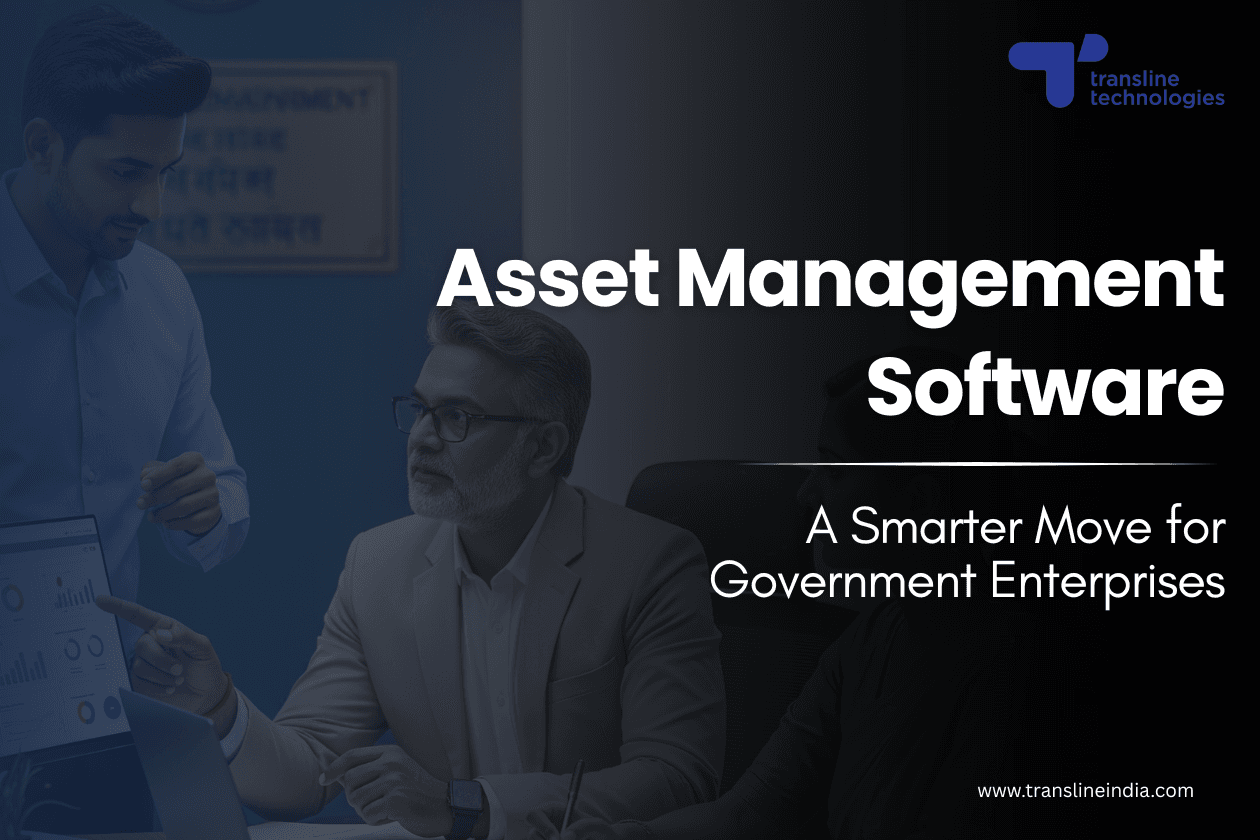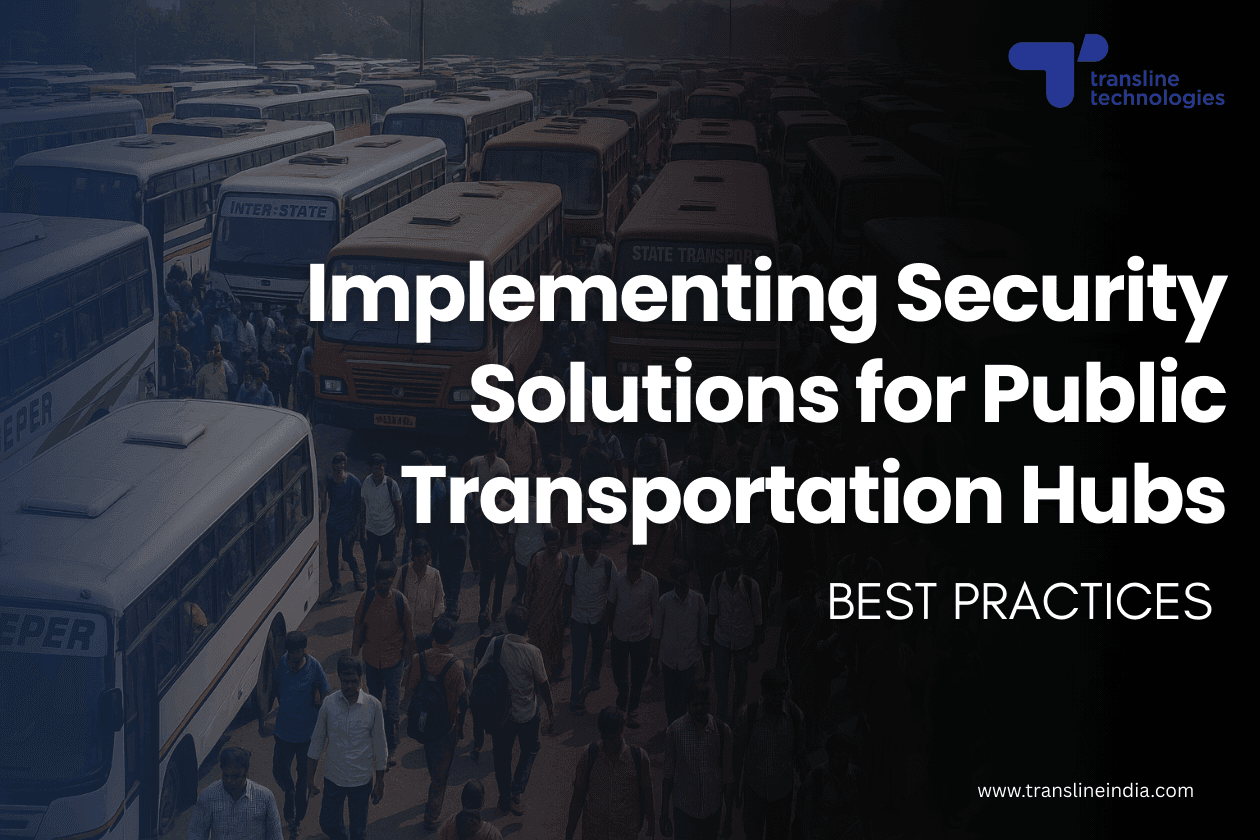
India has a multi-modal and intricately connected public transportation network, with trains, MRTS, metro-rail, State buses, private buses, auto-rickshaws, cabs, e-rickshaws etc. being some of the most common ones. High-efficiency and safe public transportation systems drive up productivity for businesses by allowing both public and private sector employees to reach their offices on time, being less tired and safe during the journey.
Evolution of Public Transportation in India
India's public transportation landscape has undergone significant transformation, especially in urban centers. The introduction of metro systems in cities like Delhi, Bengaluru, and Kochi has revolutionized urban mobility. Additionally, initiatives like the Bharatmala project aim to enhance road infrastructure, facilitating smoother intercity travel. However, this rapid expansion has also introduced new security challenges, necessitating the adoption of advanced security measures.
Why is Security Crucial in Public Transportation Hubs?
Public transportation hubs are critical infrastructures that cater to millions of citizens daily. They are potential targets for various threats, including terrorism, theft, stampedes and accidents. Deploying robust public transport security solutions is essential to protect passengers, staff, and assets, and to maintain public confidence in the transportation system.
Applications of Security Solutions in Public Transportation Hubs
Public transportation security solutions address diverse threats, encompassing physical security like surveillance systems and access controls, as well as cybersecurity measures to protect digital infrastructure. These solutions aim to detect and deter unauthorized entry, potential threats, and cyberattacks, ensuring the safety and security of passengers and infrastructure. Here, we shall discuss some of these applications in further detail
Crowd Management and Operations Excellence
Effective crowd management is vital to prevent stampedes, eliminate bottlenecks and ensure smooth operations. Implementing real-time monitoring systems, such as AI-powered CCTV cameras and crowd density sensors, can help in managing large gatherings and ensuring safety during peak hours.
Fire and Accident Prevention
Installing fire detection systems, emergency exits, and conducting regular fire drills are essential to mitigate fire hazards. Additionally, integrating accident detection systems in public transportation hubs can provide timely alerts to prevent or minimize the impact of accidents.
Unattended Baggage Detection
Unattended baggage poses significant security risks. Deploying X-ray scanners, manual checks, and implementing protocols for unattended items can enhance security and prevent potential threats.
Weapon and Dangerous Item Detection
Equipping transportation hubs with metal detectors, baggage scanners, and trained security personnel can effectively detect weapons and dangerous items, ensuring the safety of all passengers. AI powered public transportation hub CCTV cameras can leverage advanced video analytics to detect whenever anyone enters the railway terminal premises with a gun or other dangerous weapon.
Staff Attendance and Monitoring
Implementing biometric attendance systems and real-time tracking of staff can enhance accountability and ensure that security personnel are present and vigilant during their shifts.
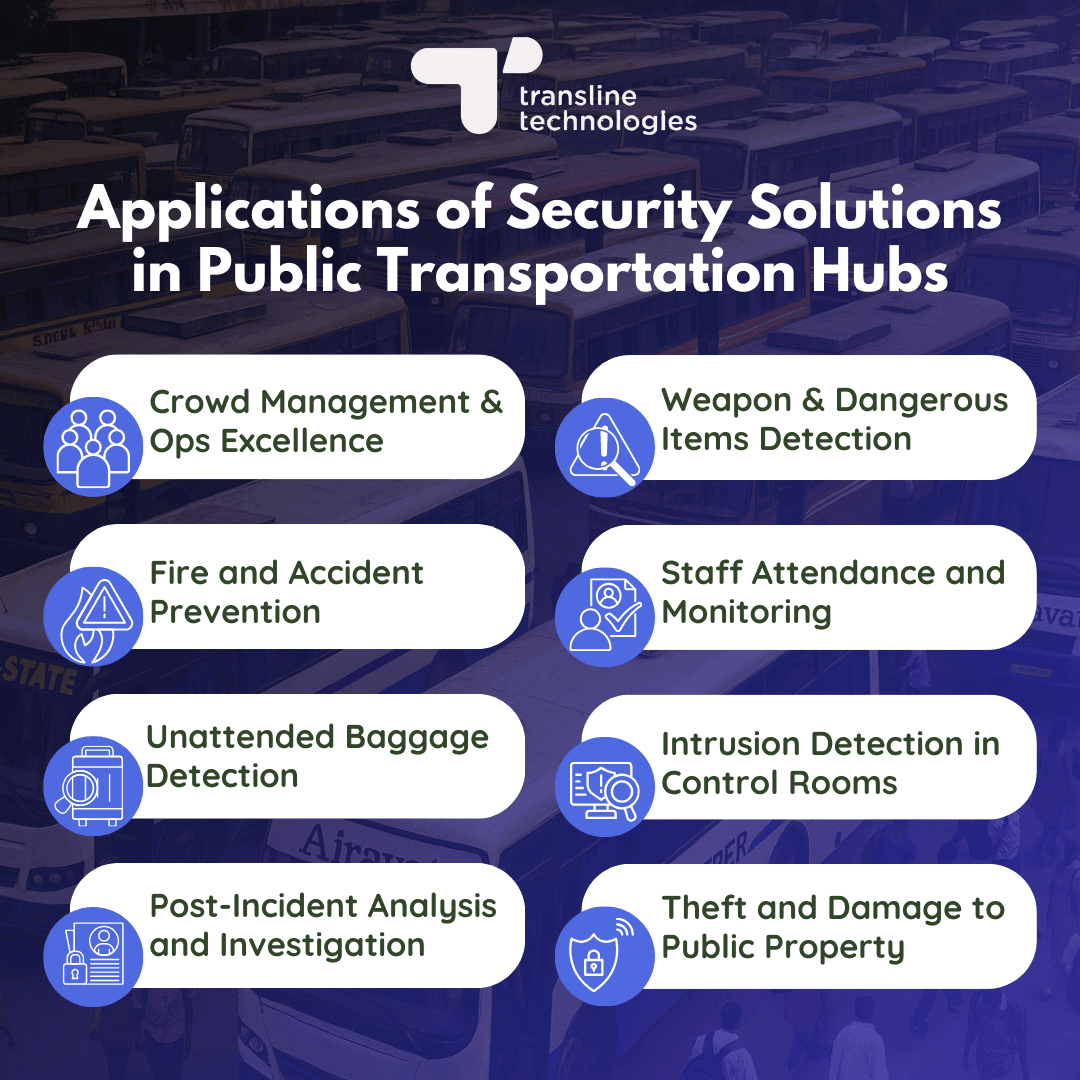
Intrusion Detection in Control Rooms
Control rooms serve as the focal point of coordination within the transportation hub as well as among multiple terminals. Installing access control systems, surveillance cameras, facial recognition systems and employing cybersecurity measures can protect these critical areas from unauthorized access and potential threats.
Theft and Damage to Public Property
To prevent theft, vandalism and other criminal activities at bus termini and other public transportation hubs, it's crucial to have surveillance systems, regular patrolling, and public awareness campaigns. Collaborating with local law enforcement can also aid in addressing such issues effectively.
Post-Incident Analysis and Investigation
After any security incident, conducting thorough investigations using data from surveillance systems and witness testimonies is essential. This helps in understanding the root cause and implementing measures to prevent future occurrences.
Best Practices in Deployment of Security and Surveillance Solutions in Public Transportation Hubs
Integrated Security Systems
Adopting a unified platform that integrates various security systems, such as surveillance cameras, access control, and alarm systems, can provide a comprehensive security solution.
Regular Training and Drills
Conducting regular training sessions and mock drills for staff ensures preparedness in handling emergencies and enhances response times.
Public Awareness Campaigns
Educating passengers about safety protocols, emergency procedures, and the importance of reporting suspicious activities can contribute to a safer environment.
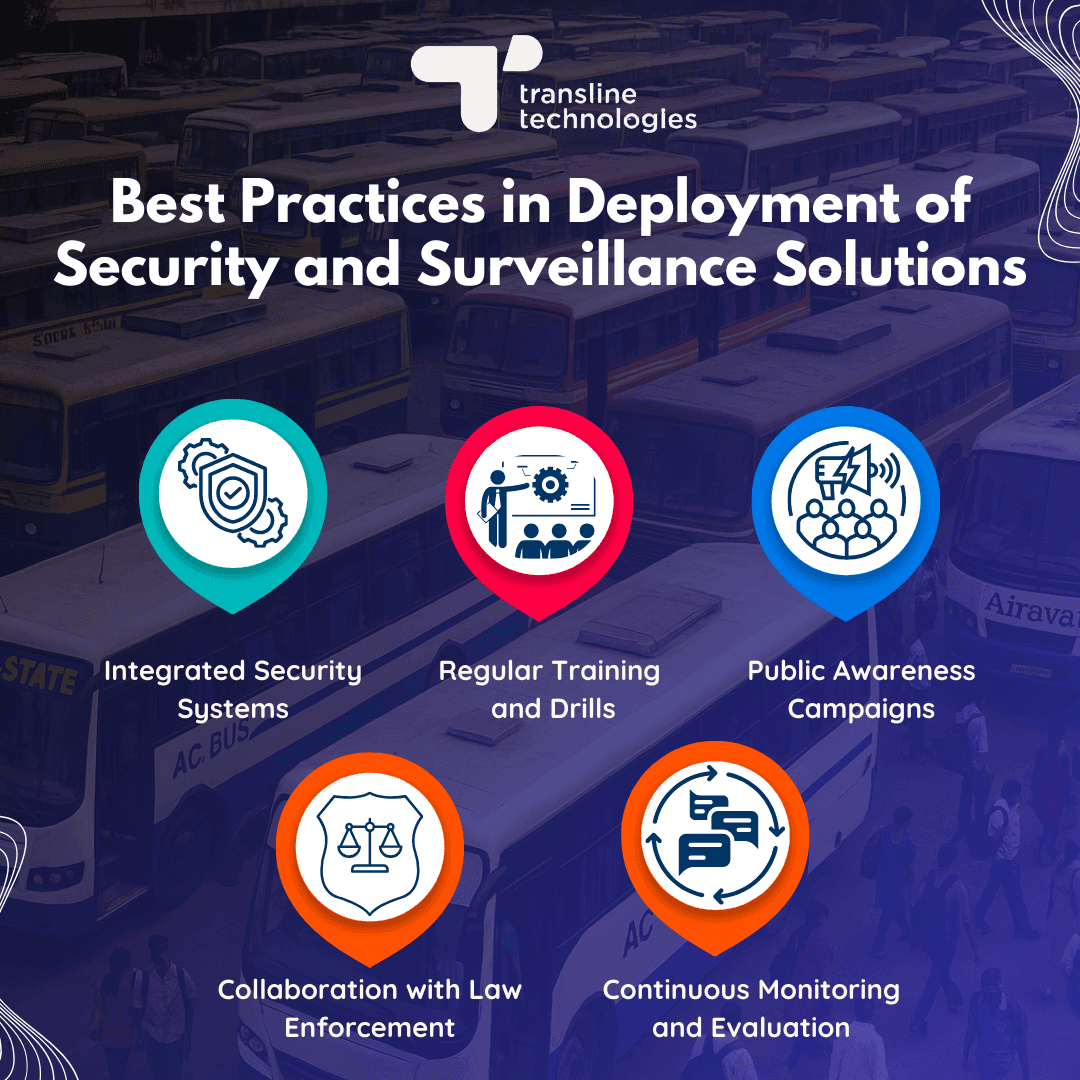
Collaboration with Law Enforcement Agencies
Establishing strong ties with local police and emergency services can facilitate quick responses during incidents and enhance overall security.
Continuous Monitoring and Evaluation
Regularly assessing the effectiveness of security measures and making necessary adjustments ensures that the security infrastructure remains robust and responsive to emerging threats.
Challenges in Deployment of Public Transport Security Solutions
Budget Constraints
Limited financial resources can hinder the procurement and maintenance of advanced security equipment and technologies. Installation of AI Surveillance Cameras and subsequent subscription costs for the software may prove to be expensive for some of the already cash-starved public transport departments.
Resistance to Change
Staff and passengers may resist new security measures due to unfamiliarity or perceived inconvenience, necessitating effective change management strategies. It has often been observed that the passengers try to evade baggage scanners and bomb detector gates during peak office timings.
Technological Limitations
Inadequate infrastructure and outdated technology can impede the implementation of modern security solutions. CCTV cameras installed at older bus terminals are often not compatible with AI-powered Video Analytics solutions and hence limit the implementation of modern technology.
Coordination Among Stakeholders
The process of public transportation surveillance implementation starts with the policy making bodies. Ensuring seamless coordination between various agencies, such as transportation authorities, law enforcement, and emergency services, is crucial for effective security management.
Data Privacy Concerns
Implementing surveillance systems raises concerns about passenger privacy, necessitating transparent policies and adherence to data protection regulations. Explicit permission needs to be taken from the public, especially where video analytics solutions are implemented.
Choosing the Right Security Solutions for Public Transportation Termini
At Transline Technologies, we have been implementing security and surveillance solutions for smooth operations at some of the busiest public transportation hubs across India. We boast of several years of expertise in installation and maintenance of AI-powered Smart CCTV Surveillance solutions, Biometric Access Control Systems, X-Ray Baggage Scanners and Metal Detectors, CCTV Storage Management Solutions and CCTV Network Health Monitoring Solutions across multiple States. We are dedicated to empowering State Transportation authorities in providing the best and safest standards of public transportation service and eliminating bottlenecks in their operations.
Connect with us to understand further how we can help you enhance public safety and security at public transportation hubs like bus terminals, metro stations, MRTS terminals etc.

